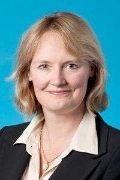Diagnosis of polycystic ovarian syndrome (PCOS) is commonly delayed, and this situation is a source of frustration for affected women, judging from findings from a survey of patients that was released early by the Journal of Clinical Endocrinology & Metabolism.
PCOS is not a difficult diagnosis to make. The disorder affected between 9% and 18% of women of reproductive age, and diagnosis requires the presence of two of the following three features: polycystic ovaries on ultrasound, biochemical/clinical hyperandrogenism, and/or oligomenorrhea/amenorrhea. Major gaps in early diagnosis of PCOS reflect the need for education and support for physicians and patients as “clear opportunities for improving patient experience,” noted Melanie Gibson-Helm, PhD, of Monash University, Melbourne, and her associates (J Clin Endo Metab. 2016. Dec 1. doi: 10.1210/jc.2016-2963 ).
A total of 1,385 women with a reported diagnosis of PCOS completed the survey, the largest international assessment of this issue. Participants were recruited via support group websites during 2015-2016. Most (64.8%) were aged 18-35 years of age at the time of the survey; 53% lived in North America, 42.2% in Europe, and 4.9% in other places.
About 34% reported waiting more than 2 years for a diagnosis, and 47.1% said they had seen more than three health care professionals before a diagnosis was established. More than half (52.5%) reported they didn’t receive any information about long-term PCOS complications or emotional counseling or support. About 35.2% said they were satisfied with their diagnosis experience, and 15.6% were satisfied with the information they received.
The survey data show that PCOS “is really a poorly understood condition that is really an orphan disease, not in the sense that it is rare, but no specialty wants to own it,” coauthor Andrea E. Dunaif, MD, director of the Northwestern University Specialized Center of Research on Sex Differences at Feinberg School of Medicine in Chicago, said in an interview.
“The bottom line it’s easy to diagnose. There’s no reason why primary care providers and general practice physicians shouldn’t be able to evaluate those women,” she said. “These women are incredibly underserved.”
Amenorrhea and hirsutism should raise a red flag among physicians, coauthor Helena Teede, MBBS, PhD, said in an interview. Dr. Teede, president-elect of the Endocrine Society of Australia, is also on the faculty of Monash University.
The survey finding confirms a previous Australian study that noted PCOS diagnosis is often delayed, includes the involvement of a series of health professionals, and also leaves many women with unmet information needs.
For researchers, the findings were no surprise and reaffirmed what they said are inadequate responses to the disease from practitioners, with far-reaching changes needed, from improvements in diagnostic procedures to possible name changes for the condition to increase its understanding.
The study findings are intended to buttress an international initiative to improve diagnoses and education to not only meet women’s needs but also, it said, to “optimize early engagement with evidence-based management.”
This research received no direct funding. Dr Gibson-Helm and Dr. Teede are National Health & Medical Research Council Research Fellows; otherwise the authors have nothing to disclose.




